Notes
Athletic Upskirting at the Australian Open
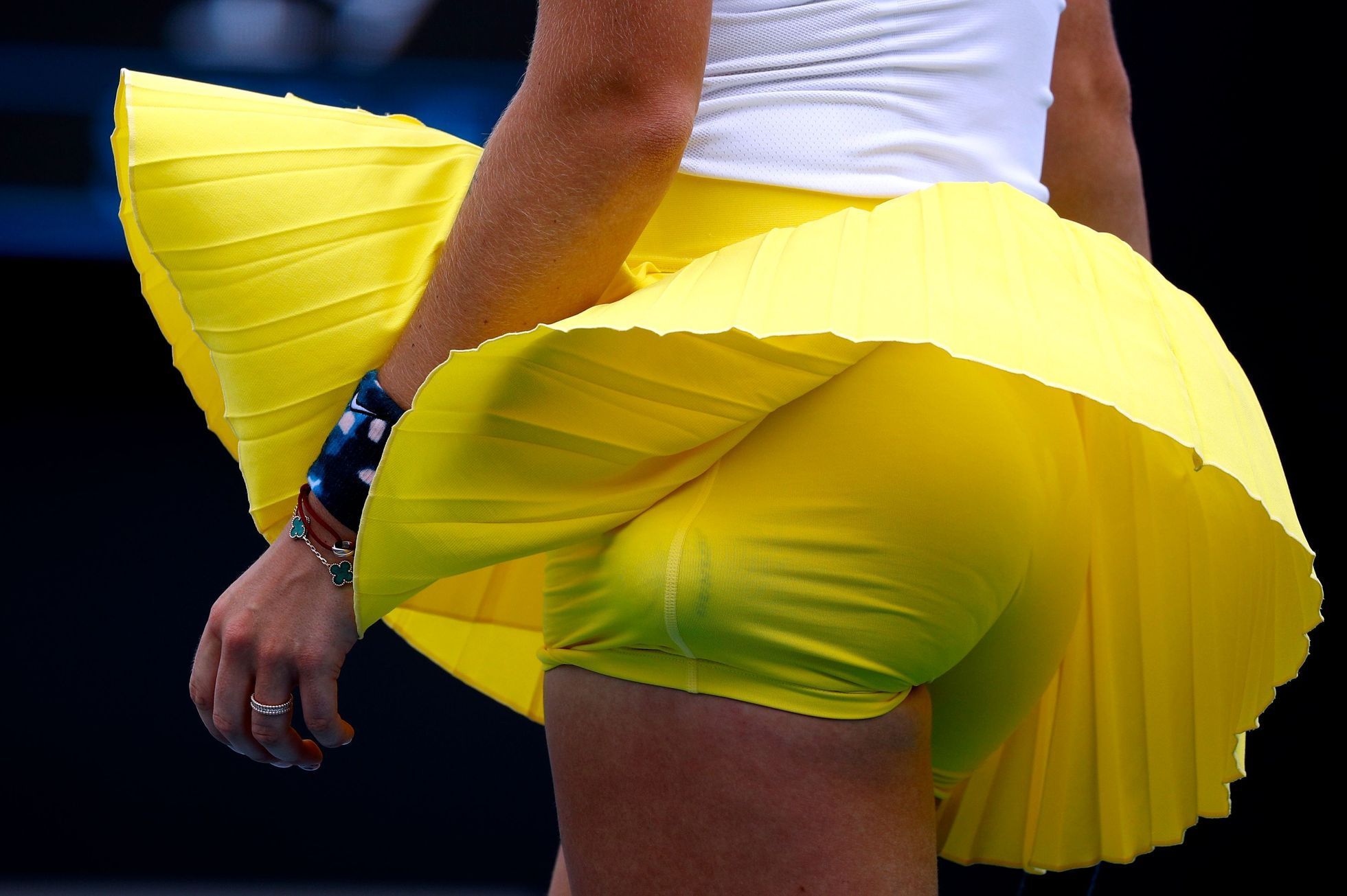
Tennis – Australian Open – First Round – Melbourne Park, Melbourne, Australia – January 22, 2020 General view of Belarus’ Aryna Sabalenka during the match against Spain’s Carla Suarez Navarro REUTERS/Edgar Su
In addition to being a (sometimes) illegal pastime of amateur photographers on subway trains and public staircases the world over, upskirting has long been a mainstay of fashion, advertising, and stock photography. It’s no surprise, then, that it pops up occasionally in the realm of sports photography in athletic events where the standard women’s uniform features short skirts and the typical activity includes flashes of whatever underpants or shorts lie beneath.
The most common athletic upskirt is the televised version featured on collegiate and professional football and basketball broadcasts: the slow pan up a cheerleader’s legs shot from beneath as she shakes her pom poms or does a high kick for the viewer:
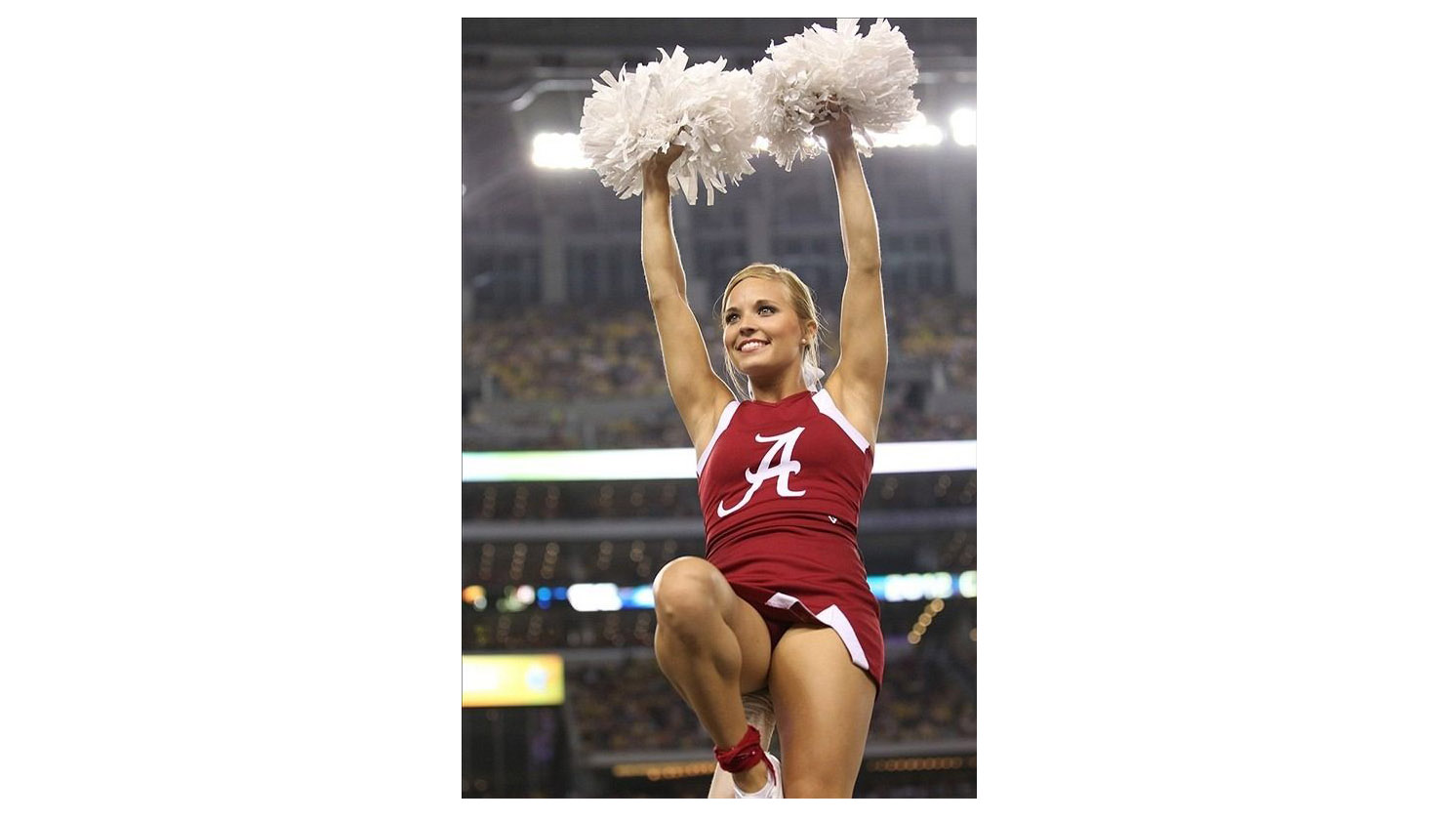
Despite the undeniable athleticism cheerleading requires, it has always been an oddly sexualized accessory to the “main event” it accompanies. The upskirting of athletes in a sport like tennis, however, means that sexual voyeurism is part of covering sports events.
Athletic upskirting is possible in tennis only because of the sport’s longstanding and ridiculous uniform conventions. Whereas men get to play in shorts of various lengths that allow for full freedom of movement without exposing their nether regions to the camera, women have been pressured (and often required) to play in skirts—a convention that grew from nineteenth-century dress codes and only permitted the shortening of the skirt as the sport modernized. Very recently, women players have pushed for more uniform options, but skirts remain the norm on the professional circuit.
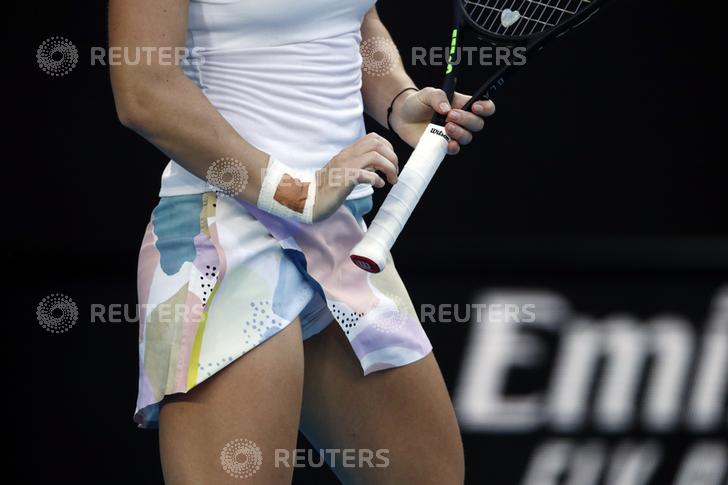
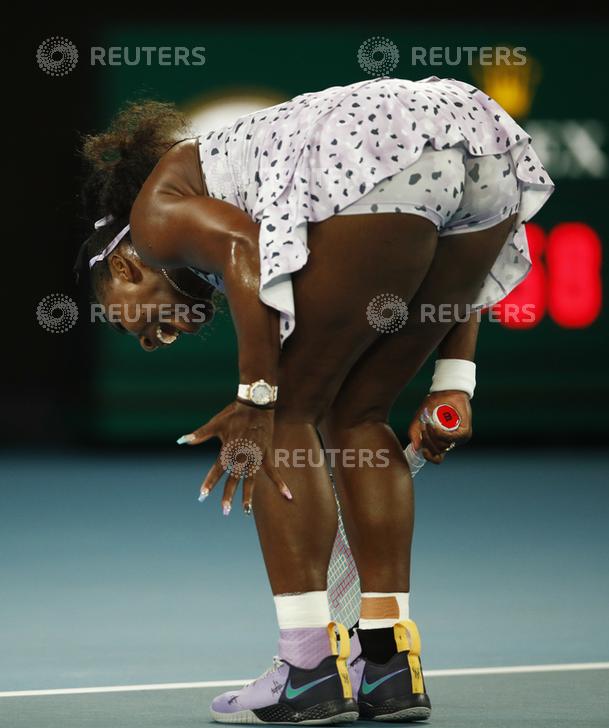
So it’s not a surprise that the thousands of shots posted by Reuters of the Australian Open contained a few upskirts. Just because they’re common, however, doesn’t mean they’re harmless. An athletic upskirt shot in tennis has some clearly recurring features that photo editors and news outlets should exclude from their coverage.
Not every photo that reveals an athletic brief or bike short qualifies as an “upskirt.” Action shots such as the one of the Czech Republic’s Petra Kvitova, below, where the athletic activity is the focus and the motion of the skirt incidental, don’t evoke the unique and troubling perspective of the upskirt.
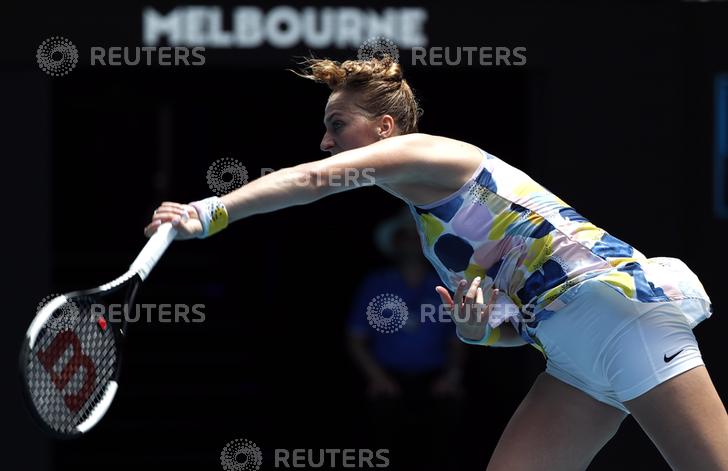
An upskirt is a particular kind of shot—a titillating glimpse under a skirt that feels voyeuristic, invasive, and often sexualized.
The photographs featured at the top of this piece are more recognizable as upskirt photos when paired with the infamous upskirt shots from popular culture that they mirror. Edgar Su’s shot of Belarus’s Aryna Sabalenka was captioned a “general shot,” but it looks like an homage to Sam Shaw’s iconic photo spread of Marilyn Monroe, taken during the filming of The Seven Year Itch.
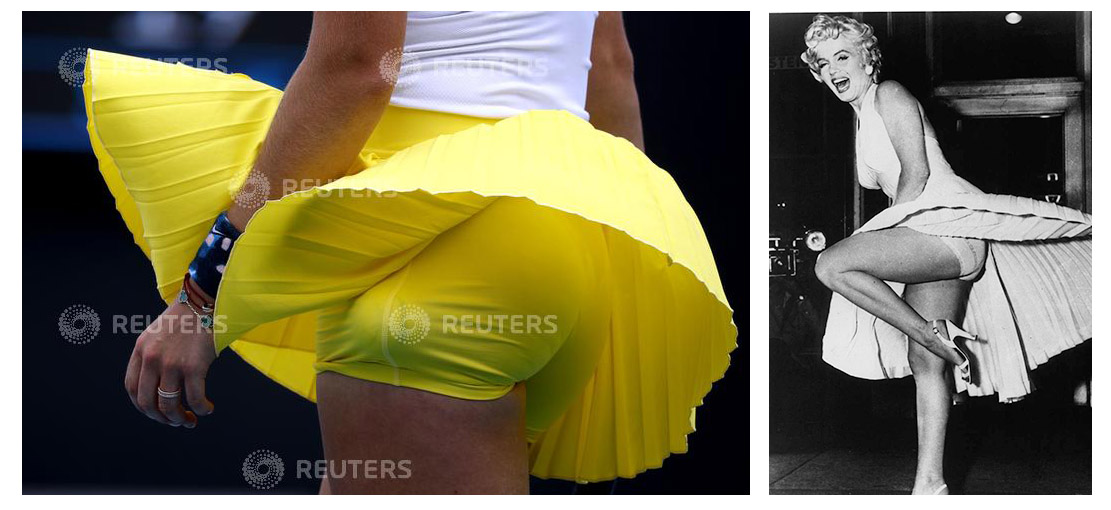
Alert writer, photographer, and Reading the Pictures reader Alan Weedon contacted Reuters about this image and a few others, stating his concern about their connotations as upskirt images. Reuters’ Ethics and Standards editor Brian Moss insisted that this wasn’t an upskirt photo, contending that the “intent is not to show women’s genitals or underwear that is normally hidden from view.” Moss then argued that this particular photo was “editorially sound” because “the billowing, bright yellow skirt and rounded shapes against the dark background caught our photographer’s eye,” and “the composition and the contrast are nearly perfect.”
It’s possible that neither Su nor Moss were consciously aware of the fact that the billowing skirt, composition, and contrast directly invoke the famous Marilyn Monroe image, and that is perhaps why they seem appealing and “nearly perfect.” To deny that Su’s shot contains the formal properties of an upskirt photo, however, is willful ignorance.
Su’s photo of Serena Williams mirrors a famously controversial American Apparel upskirt ad:
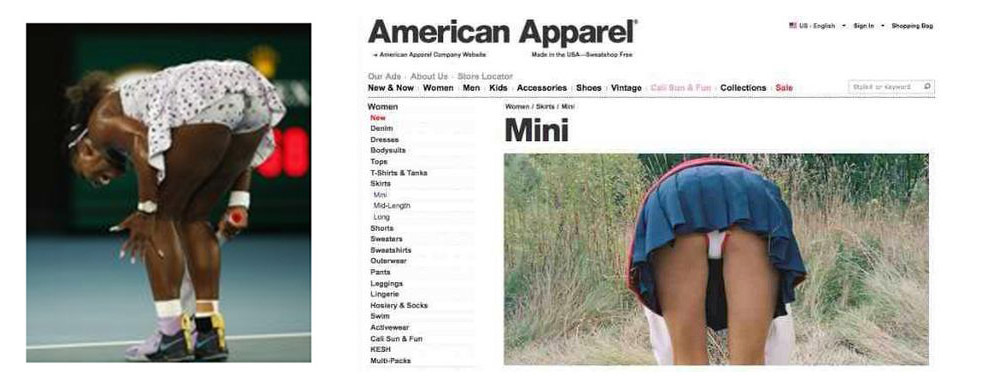
Taken from another angle, the image of Williams could be a completely legitimate depiction of emotion. However, the angle Su chose focuses not on Williams’s emotion, but on her exposed derriere—a pose that makes more sense in the context of a porn shoot than a journalistic account of women’s professional tennis.
When asked about Su’s photo of Romania’s Simona Halep, below (not that you would know it’s Halep, since her head is missing), Moss insisted that the focus was on “not what’s under her skirt but the bandage on her wrist, a detail that might prove to be important in the coverage of her match.”
While he’s absolutely correct about the relevance of the injury, what Moss fails to recognize is how the photo is framed. It could have been cropped at the wrist and extended up, to show her face. That framing would have told a narrative about an injured competitor. Instead, the injured wrist points toward the exposed crotch, while the white racket handle takes on a phallic quality.
The photo is a mirror image of the cropped shot below posted on a host of “celebrity upskirt photo” websites. It turns French model Cindy Bruna into a headless set of boobs and peek-a-boo panties.
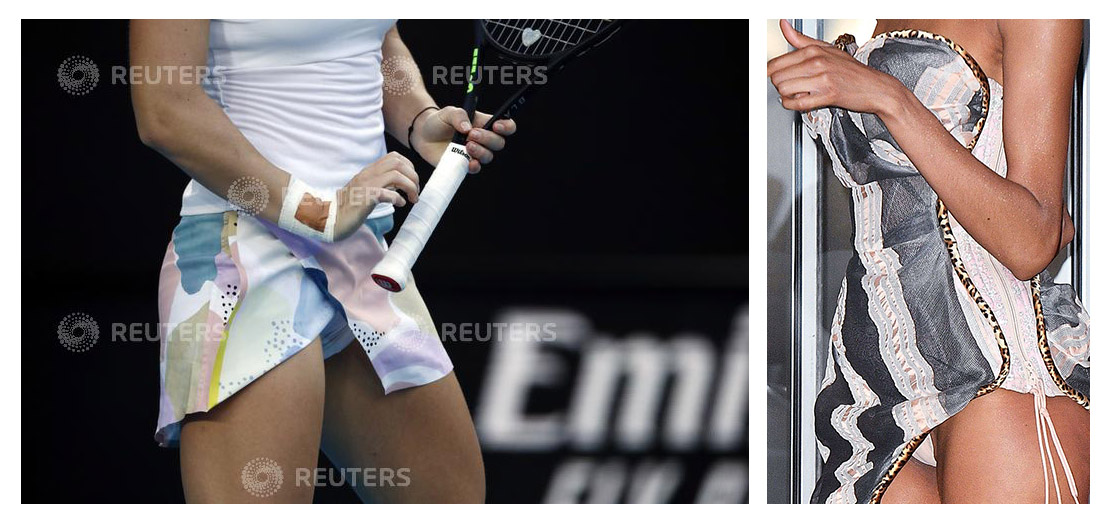
Sociologist Jean Kilbourne’s Killing Us Softly film series assesses the misogynistic strategies advertisers use to sell products. One of them is to dehumanize women by depicting them as body parts rather than as whole people. Such pictorial decapitation robs the individual model or athlete of her distinctive identity and full humanity, allowing the consumer or fan voyeur to zero in on the sexualized parts in the center of the frame.
That’s why Hannah Mckay’s shot of Cori Gauff, below, is an example of athletic upskirting even though no underpants are visible. The aesthetic is identical to this more explicitly sexual stock photo:

I can’t think of a journalistic scenario in which a player’s participation in the Australian Open would be best illustrated by a provocative depiction of a faceless athlete featuring only her crotch and thighs. Reuters has a wealth of more appropriate photos of Gauff (taken by Mckay) from which to choose.
At first, I was concerned about plucking four photos out of over 4,000 in Reuters’ Australian Open coverage. Why highlight images likely destined for archival oblivion? But then I read the exchange between Weedon and Moss. When confronted by a valid critique from a concerned reader, the person charged with maintaining “Ethics and Standards” for Reuters defended this depiction of women athletes, saying that “the photos are editorially sound. We stand by them.”
Well, Reuters, you shouldn’t stand by them. Photos like these help create a culture that undercuts women athletes and endangers women more broadly. When Sam Shaw created his original, iconic Marilyn Monroe upskirt photo shoot, he couldn’t have envisioned a future where individuals carrying camera phones in their pockets could snap digital upskirt shots of anonymous women without their consent and make them instantly and permanently available to the world. You, however, know better.
— Karrin Anderson | @KVAnderson
(Photo 1: Edgar Su/Reuters. Caption: General view of Belarus’ Aryna Sabalenka during the match against Spain’s Carla Suarez Navarro. January 22, 2020; Photo 2: Edgar Su/Reuters. Caption: Romania’s Simona Halep during the match against Jennifer Brady of the U.S. January 21, 2020; Photo 3: Edgar Su/Reuters. Caption: Serena Williams of the U.S. reacts during the match against Slovenia’s Tamara Zidansek. January 22, 2020; Photo 4: via Pinterest; Photo 5: Issei Kato/Reuters. Caption: Czech Republic’s Petra Kvitova in action during her match against Greece’s Maria Sakkari. January 26, 2020; Photo 6: Moviepix Caption: The iconic image of Marilyn Monroe was shot by photographer Sam Shaw during the filming of “The Seven Year Itch; Photo 7: American Apparel ad, featured in a tweet by @VagendaMagazine. August 7, 2014; Photo 9: via Sawfirst Caption: Cindy Bruna – Upskirt at Cannes; Photo 10: Hannah Mckay/Reuters; Caption: Cori Gauff of the U.S. during the match against Japan’s Naomi Osaka. January 24, 2020; Photo 11: Vladimir Gjorgiev/Shutterstock.
Receive Our Email Newsletter
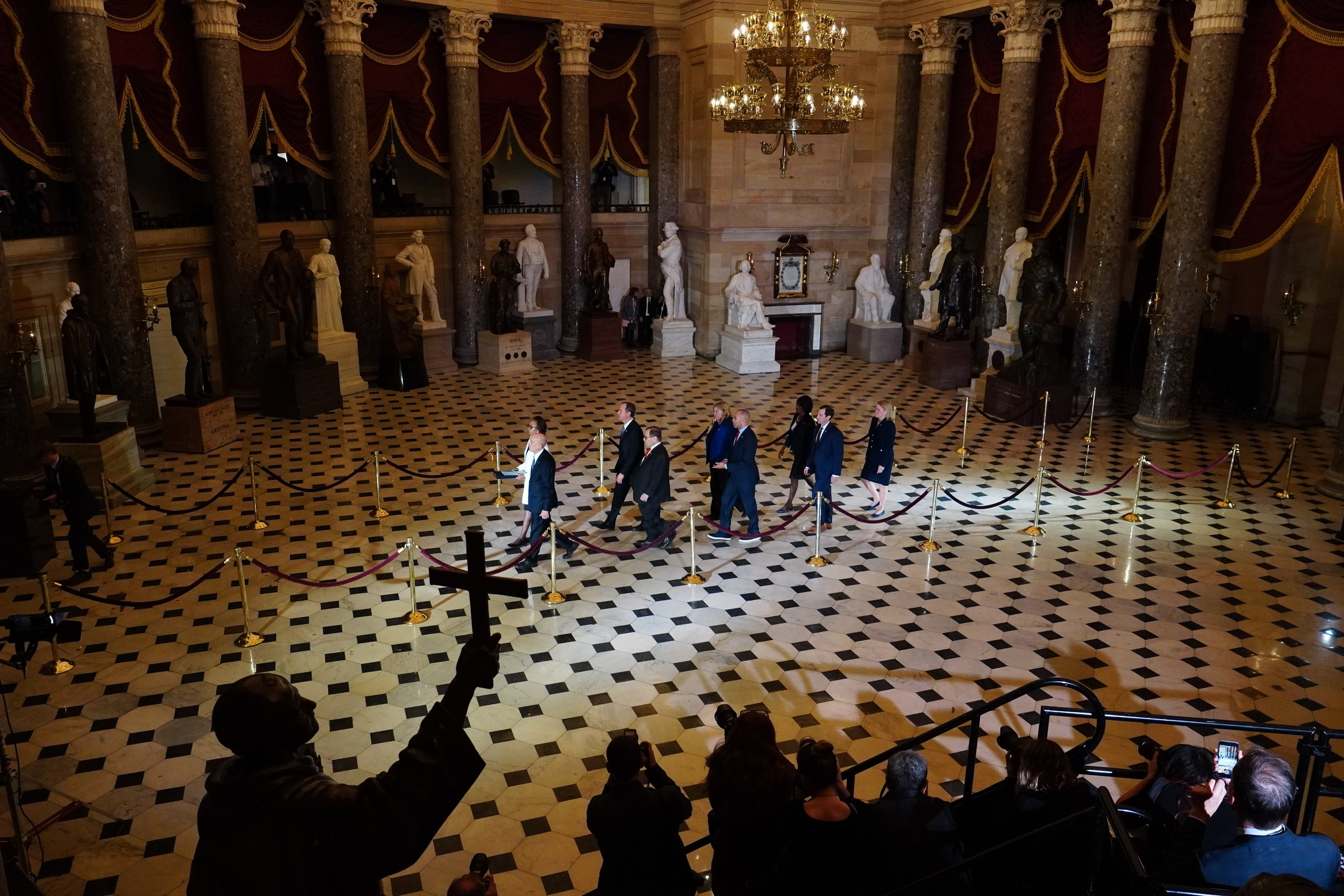
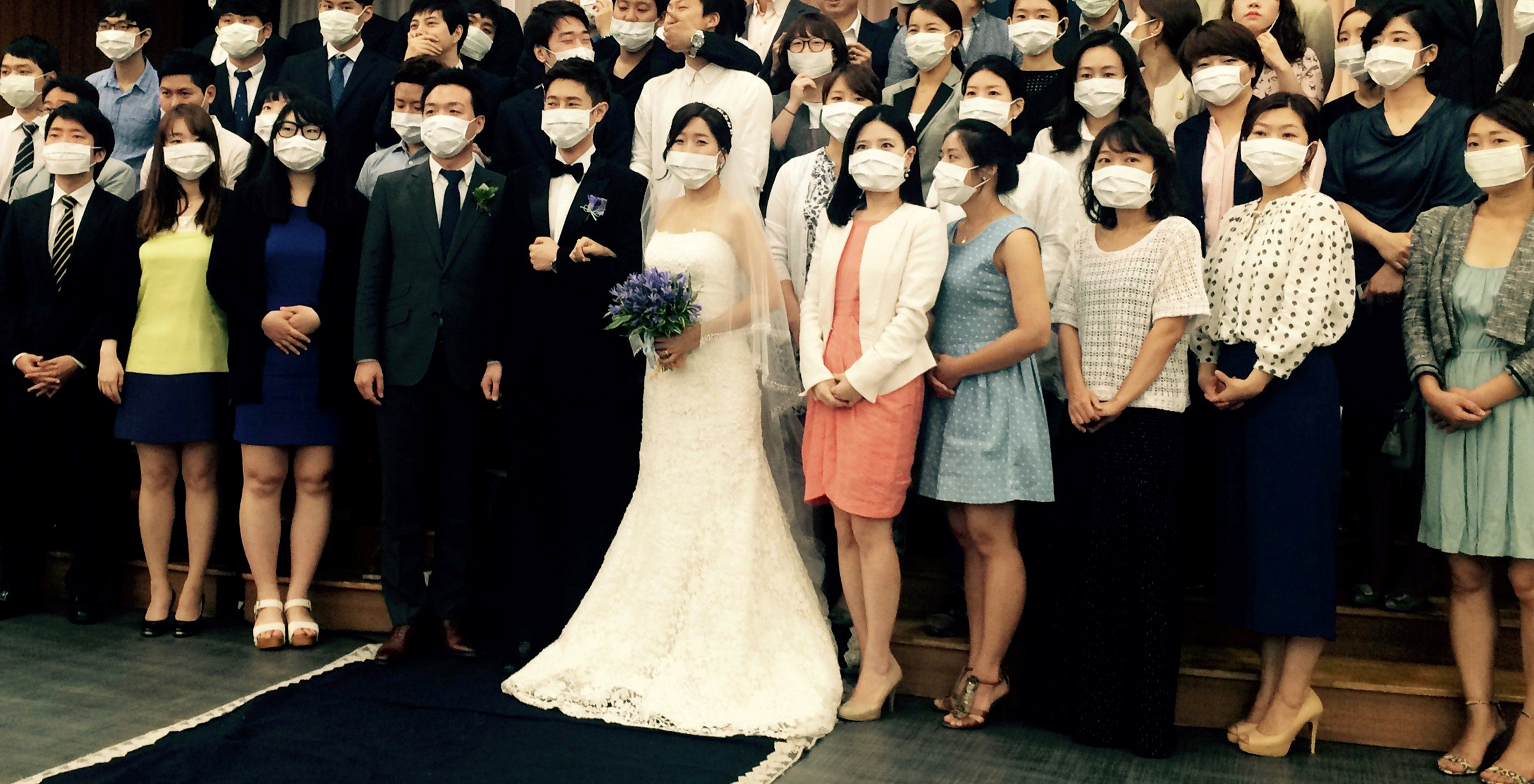
Reactions
Comments Powered by Disqus